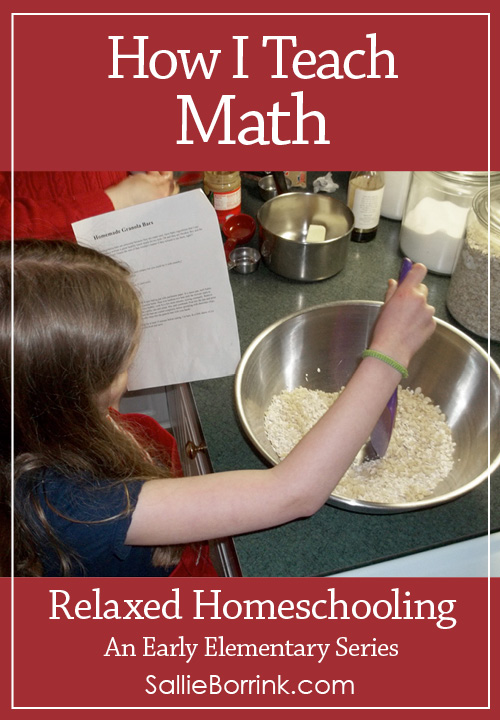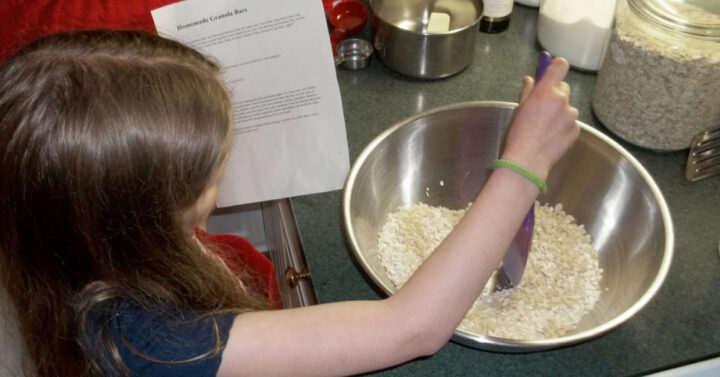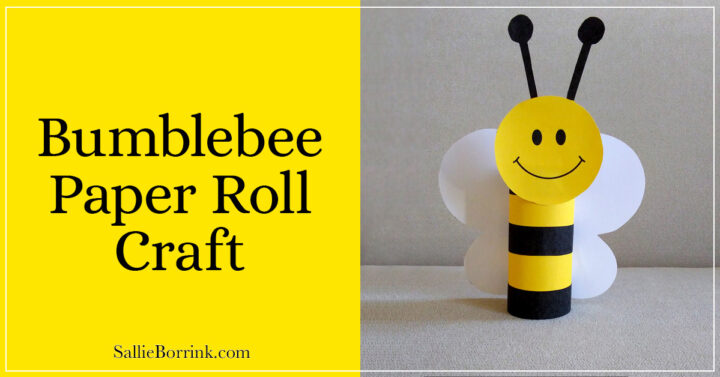Since I’ve already written at length about how we ended up as relaxed homeschoolers in my series intro and language arts post, I’m going to jump right into explaining our relaxed homeschooling math approach in the early elementary grades.
Mathematics Versus Arithmetic
In The Right Side of Normal: Understanding and Honoring the Natural Learning Path for Right-Brained Children, Cindy Gaddis differentiates between arithmetic and mathematics. She describes arithmetic as “the act of manipulating quantities (facts).” Mathematics, on the other hand, is the “science of finding patterns, coming up with theories about it, and proving its existence (concepts).”
Right-brained children are most comfortable with mathematics.
Left-brained children gravitate toward arithmetic.
The Bluedorns also have an interesting (and lengthy) article about Research on the Teaching of Math: Formal Arithmetic at Age Ten? Hurried or Delayed? In a nutshell, they trace the teaching of arithmetic through history.
For much of history, arithmetic was not taught before age 13 or 15. It was eventually (and recently) pushed down to age 10. And even more recently it has been pushed down to age 4 or 5. If you only have time to read part of it, skip down to the bullet points at the end which sum up the ideas very well. I pretty much concur with their view of things, especially as it relates to the speed at which a child can learn arithmetic at a later age and the importance of spending more time on vocabulary and verbal language skills.
So with that bit of background, here is how we teach math.
Relaxed Homeschooling Math Activities
So far we have been all about mathematics and not much about arithmetic.
Like most right-brained children, Caroline is very into mathematics. She’s incredibly skilled at construction of three-dimensional objects. At her homeschool co-op she has no problem assembling complicated projects and ends up helping children older than herself after she finishes with ease. Her teacher has mentioned a few different times at how skilled she is in this area.
Caroline constructs endless objects out of whatever she can find. She has spent untold hours with her daddy over the past four years building elaborate creations out of our huge collection of pink and purple Tinker Toys.
She was a skilled puzzle solver from a very early age.
She has always been very aware of patterns and wanting to figure out how things fit together or the relationship between objects.
Because writing is not her thing (dysgraphia) and she doesn’t seem to be clicking yet with arithmetic to a large degree, I’ve focused on all forms of math that don’t seem like math to her. (In her mind, math is adding numbers.)
We’ve done extensive work with maps which she thoroughly enjoys. I pull out math workbook pages (which she has no problem with as long as they are colorful) that reinforce different math concepts but do not require arithmetic.
We tried Life of Fred and she flat out rejected it. Completely. And that was fine. I just put it away.
I encourage her to use apps on the Kindle Fire that involve math, but she does very little that has to do with arithmetic. And, again, that’s fine with me.
My main goal right now when it comes to arithmetic is to not make her hate it. I’ve really backed off and am doing whatever I can to make sure she is learning math without making her think numbers are horrible and evil. Eventually I expect that it will all start clicking and we’ll accomplish in a week what would have taken us months if I had tried to push it before she was ready.
As a homeschooling mom, I study my child and try to offer her what she needs, when she needs it. That is the beauty and freedom of homeschooling.
This is part of my Relaxed Homeschooling in the Early Elementary Years series.
Read the Introduction to the series here.










 Relaxed Homeschooling Reading and Writing in Early Elementary
Relaxed Homeschooling Reading and Writing in Early Elementary
I agree completely on Legos. They have helped my 5 year old son figure out how to add without me ever doing any formal math lessons. In fact, he can’t actually read numerals yet. I didn’t want to have him learn numerals until he understood basic addition and subtraction because I believe that little kids struggle with math sometimes because we are actually asking them to do two things when they see 2 + 2. First, they have to decode “2” and “+” and second, they have to take the abstract concept of “2” and turn it into something concrete, like two fingers or two beans, etc. Then they are supposed to add the two concrete things together, so I guess it’s really three things. We adults see it as one operation, but that’s because our brains can operate in the realm of the abstract in a way that a five year old’s brain can’t yet. So, my son (who doesn’t know what “8” is) can tell you that 5 + 3 equals 8.
Hi Leah,
Isn’t it fascinating how children can figure things out on their own just using good toys and manipulatives? Legos are such a great today for learning all kinds of math concepts. 🙂
Very interesting!
But I still don’t “get” how to teach math this relaxed way!
My son is seven and struggles everyday with Horizon Math! Lots of adding and subtraction etc.! I just force him but also try to encourage a good attitude!
But can color code a huge LEGO creation or puzzle with ease!
Can you recommend a good program! Or more details on how you teach!
Felice,
I really backed off on any kind of arithmetic until Caroline was around 8.5. I determined she just wasn’t ready for it. If you read the links in my post, there are good reasons to suspect many children are not ready for arithmetic as early as traditional schools expect it.
My philosophy is that when a child is ready for something, it is almost effortless. Yes, it does take some work, but if it is a struggle I think more often than not they simply aren’t ready developmentally.
They will also pick things up when they have a true need for it. Caroline started doing adding and subtracting on her own when she wanted to figure something out. I’ve let her progress at pretty much her own speed since I determined that is what’s best for her.